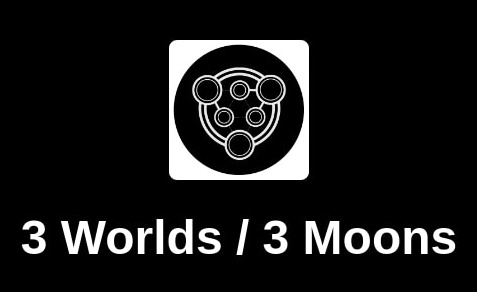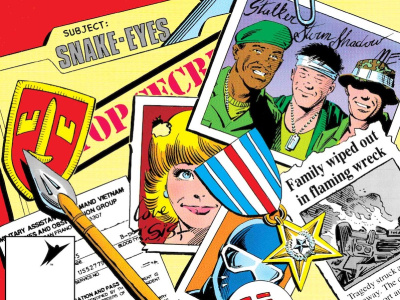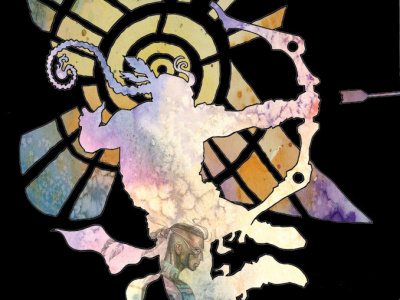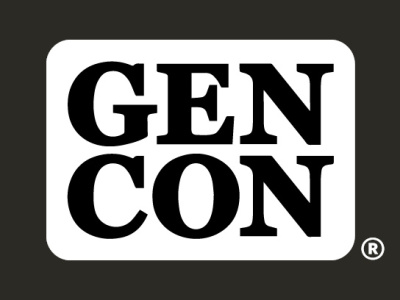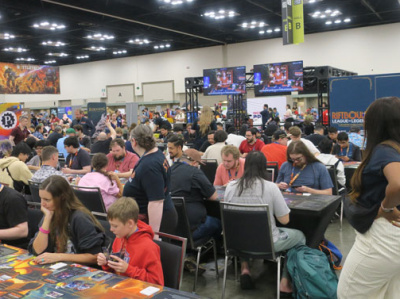Last year when Substack announced its comics program, including the participation of some of the biggest names in the business and barrels full of startup dollars, I was bullish on the creator model and a wee bit skeptical about potential consumer uptake (see "Comics on Substack Makes Sense in Every Way Except One"). Specifically, I wondered how many fans of these kinds of established creators were eager to read serialized episodes of new material several times a week in their email or on basic reader apps on their phones or computers.
Turns out, quite a few. And that has some pretty profound implications for the industry as a whole.
To the Moons! Last week Jonathan Hickman, Mike Del Mundo and Mike Huddleston took stock of what they’ve accomplished after nine months of running their Substack 3 Worlds/ 3 Moons, which features stories in a connected science fiction themed universe. The latest entry, The Vallars, with art by Jason Howard, debuted with a printed preview to some acclaim this past Free Comic Book Day, primarily as a way to bring new readers (and subscribers) to the site.
In the post, Hickman wrote "As of today, we have just under 10,000 overall subscribers, with 2,300 of you supporting us financially as paid subscribers. About a third of those do so at the founding level."
Regular subscriptions run $80/year, founding level is $250. Depending on exact numbers, it pencils out to around $275-290K from the platform, to be divided among the three principal creators, their full-time editor Steve Wacker, and other artists like Jerome Opera, Andy Kuhn and Howard. That’s not exactly a killing, but it definitely sounds like it pays most of the costs of producing the material, which can then be repackaged for print and sold through the direct market and trade book channels, with a boost from a crowdfunding campaign on Zoop. With Substack, all those print rights reside with the creators.
We don’t have numbers from the other top-shelf creators who made the leap to Substack, such as James Tynion IV, Scott Snyder, ND Stevenson, Brian K. Vaughan, Jeff Lemire, Chip Zdarsky, Skottie Young, Molly Knox Ostertag, Saladin Ahmed and relatively recent arrival Grant Morrison. But obviously there is an audience willing to pay for comics done this way. If 3 Worlds / 3 Moons is an extreme outlier in terms of earned income, these Substacks could still be accounting for nearly a million dollars a year going directly to creators. And if Hickman and company’s numbers are typical, then that figure could be quite a bit higher.
More slices, bigger pie. In the early days of digital, people in the traditional comics business clinging to hard-won gains saw the encroachment of platforms like comiXology as competition for a finite pool of consumer dollars, an impression that was not helped when the fan-run independent startup was acquired by Amazon. Nevertheless, the heavily hyped "bits versus atoms" showdown never materialized. Digital download-to-own established itself in a corner of the market, the all-you-can-eat subscription model arose, and retail sales continued to pile up, reaching a record $1.12 billion last year without counting digital subscriptions. Turns out that the comics market is not a zero-sum game after all.
Substack, by being so aggressive with its pitch to A-list comics writers, poses a different challenge. Can the comics business absorb a couple million dollars drained out of retail and publishing through direct-to-consumer digital subscriptions? Sure. Crowdfunding takes a much bigger bite and that doesn’t seem to hurt.
What’s less certain is how the Big Two, and eventually the "Front Five," can fare when so many of their biggest names are spending all their time producing comics for this limited audience of readers/subscribers, under much more favorable terms and creative control.
The balance of power. The comics business is a delicate balance between the appeal of long-running characters, which are often corporate-owned or licensed, and creators, who periodically get to ride these thoroughbreds for a lap or two around the track, accumulating fans and accolades as they add to the mythology. Sure, it’s possible for creators to build their reputation purely on the basis of their own creation (think Robert Kirkman, for example), but it is more often the case that even creators with big successes in the world of independent comics can scale up their fanbase dramatically with a run on a fan-favorite book from Marvel or DC. This then sets them up for a much more lucrative and lower-risk career if they pursue creator-owned or crowdfunded projects later.
The larger corporate publishers have benefited from this dynamic, using smaller presses as a farm-team where up-and-coming creators, especially writers, can prove their bonafides before being trusted with the crown jewels. Incoming Batman writer Ram V., for example, showed himself as one of the best of his generation with These Savage Shores from Vault Comics before getting tapped for DC’s premier title. They know that a top creator’s tenure on a book, and association with the company, may be long or short, but there’s always a fresh supply of new talent coming up the ladder.
It arguably sweetens the deal for some of these creators to not only get to work on the titles they grew up reading, at top page rates, but also that it sets them up for potential success as an independent in just a few short years. All they have to worry about is the risk of creating a new franchise character for the corporate owner, then getting cut out of the future revenue streams due to the work-for-hire agreement. But even that could help down the line, because fans remember creators even if the big companies are hesitant to give credit or write checks.
Winners and losers. When Substack comes bounding into the arena throwing around wads of cash and favorable term sheets, it hurts the big publishers a little by skimming off bankable name brand creators and forcing them into a round of promotions and replacements maybe a little sooner than they’d like, or else sweeten the deal to keep key creators in place. To the extent that fans will drop books when their favorite writers jump ship, that introduces some unwelcome uncertainty both for publishers and retailers.
It also hurts the likes of Image Comics, Dark Horse Comics, IDW Publishing, BOOM! Studios, comiXology Originals and the other emerging creator-friendly publishers by competing for the big names whose creator-driven projects carry relatively smaller risks. But hey, it’s a free market, and competition is part of the game.
If this work never reaches the bookshelf, that’s a loss for retailers too. But nearly all the digital-first platforms, including Substack, comiXology Originals, Tapas and Webtoon, now have print deals. That means the platforms are pre-vetting viable work, so that the material that gets to the shelf has already proven itself to fans and generated some outside buzz.
It’s not clear from the limited data available whether this model is scalable beyond a very tight group of superstars. Substack declined to provide any broader metrics. However, if the 3 Worlds / 3 Moons example is within reach of creators with similar appeal, resources and commitment as Hickman, del Mundo and Huddleston have demonstrated in building their property, then it would seem to be economically sustainable for both the creators and the platform without taking money out of anyone else’s pockets. And that sounds like good news.
The opinions expressed in this column are solely those of the writer(s), and do not necessarily reflect the views of the editorial staff of ICv2.com.
Rob Salkowitz (@robsalk) is the author of Comic-Con and the Business of Pop Culture.
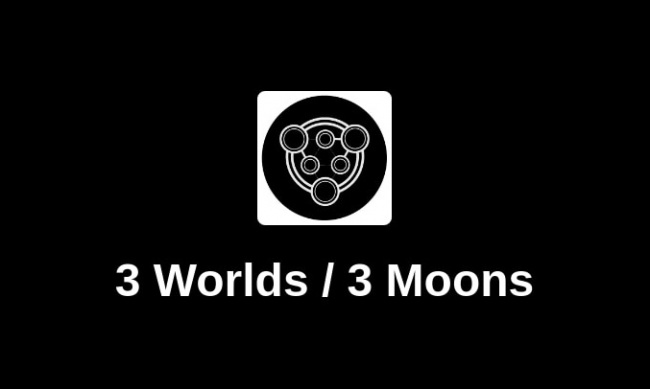
Column by Rob Salkowitz
Posted by Rob Salkowitz on June 1, 2022 @ 3:37 am CT
MORE COMICS
'Hama Files Editions' Will Include a Letter from the Creator
August 11, 2025
Each issue of the Hama Files Editions will include a letter from Hama with background information about the comic.
From Marvel Comics
August 11, 2025
Spinning out of Deniz Camp and Juan Frigeri's Ultimates,Ultimate Hawkeye #1 by Taboo, B. Earl and Michael Sta. Maria hits stands next month.
MORE COLUMNS
Column by Scott Thorne
August 11, 2025
This week, columnist Scott Thorne notes a new twist in the Diamond Comic Distributors saga and shares his thoughts on the Gen Con releases that will make the biggest impacts.
Column by Jeffrey Dohm-Sanchez
August 7, 2025
ICv2 Managing Editor Jeffrey Dohm-Sanchez lays out the hotness of Gen Con 2025.




